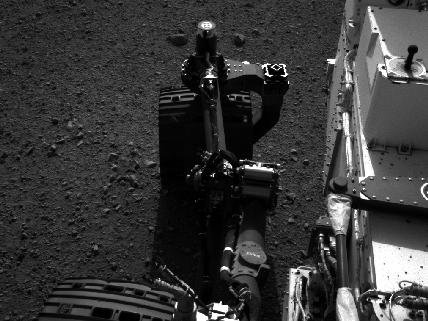SUMMARY
This is AI generated summarization, which may have errors. For context, always refer to the full article.

LOS ANGELES, United States – A little more than two weeks after its arrival on Mars, NASA’s Curiosity rover will on Wednesday, August 22, make its first “test drive” before setting off on its Red Planet mission, the US space agency said.
The $2.5 billion rover, which landed on Mars on August 6, has performed a battery of tests and appears ready to embark on its two-year mission to explore the Red Planet in the hunt for signs of life, NASA said Tuesday.
On Monday, NASA “did the wheel steering test,” said the Mars Science Laboratory (MSL) mission manager, Mike Watkins, at NASA’s Jet Propulsion Laboratory (JPL) in Pasadena, California.
The size of a small car, the one-ton rover is equipped with six wheels, four of which can pivot. A series of photos posted to the NASA website show the wheels are fully functioning and ready to roll.
“We’ll go for our first test drive tomorrow,” Watkins told reporters on a teleconference.
“We’ll drive about three meters forward, and then turn, and then drive back a little less than that… We don’t back up right to the same location that we are in right now.”
If the test, set to last “about half an hour, a little less,” is a success, Curiosity will leave its landing spot in three or four days, Watkins said.
“We have a couple more activities to complete before we start driving,” he said.
Curiosity — the largest rover ever sent to Mars — hopes to conquer Mount Sharp as part of its two-year mission to explore the planet and analyze sediment layers that are up to a billion years old.
It will first head in the direction of Glenelg, a spot in Gale Crater less than 500 meters (yards) away from its current position. The site contains three different kinds of terrain that NASA scientists aim to explore.
The rover is expected to adopt a moderate pace of “10, 20, 30 meters a day for a while” but will eventually reach a pace of “over 100 meters a day,” Watkins said.
NASA on Tuesday also announced its first real setback of the Curiosity mission — one of two sensors to measure wind speed has been damaged, probably during landing, and cannot be repaired.
One of the scientists responsible for the rover’s weather station, Ashwin Vasavada, said the damage is “a little disappointing,” but not “dire,” as the other sensor is “completely operational.”
“The only thing is that there will be a small ambiguity if the wind were coming directly from behind” the sensor, Vasavada added.
Scientists do not expect Curiosity to find aliens or living creatures but they hope to use it to analyze soil and rocks for signs the building blocks of life are present and may have supported life in the past.
The project also aims to study the Martian environment to prepare for a possible human mission there in the coming years. US President Barack Obama has vowed to send humans to the planet by 2030. – Romain Raynaldy, Agence France-Presse
Add a comment
How does this make you feel?
There are no comments yet. Add your comment to start the conversation.